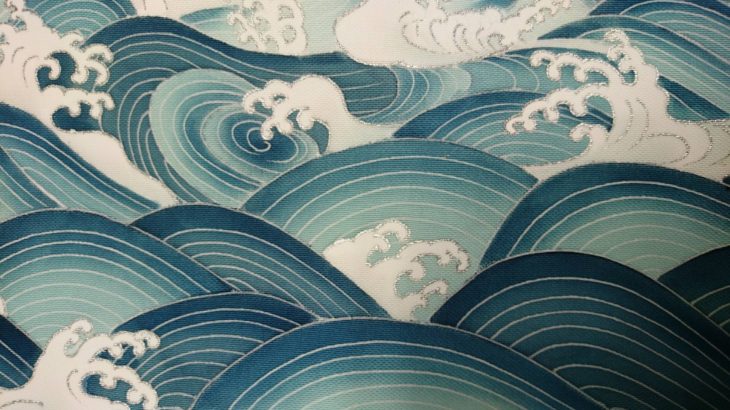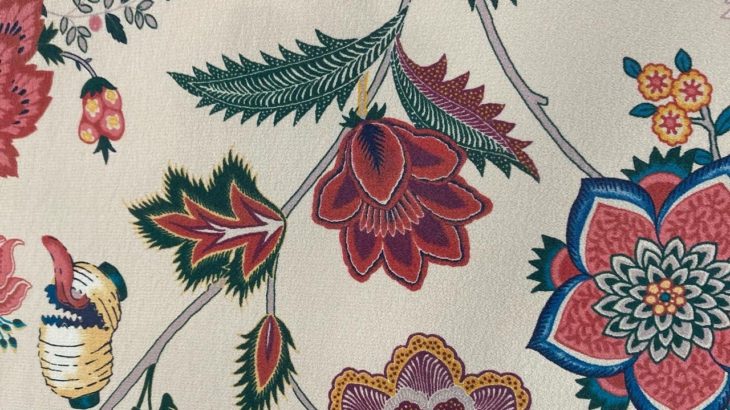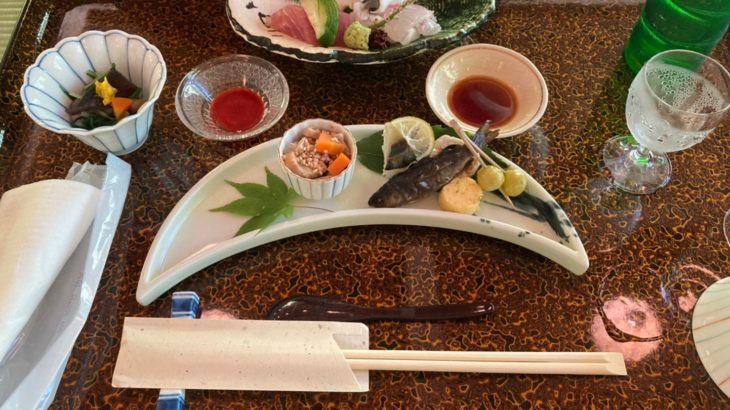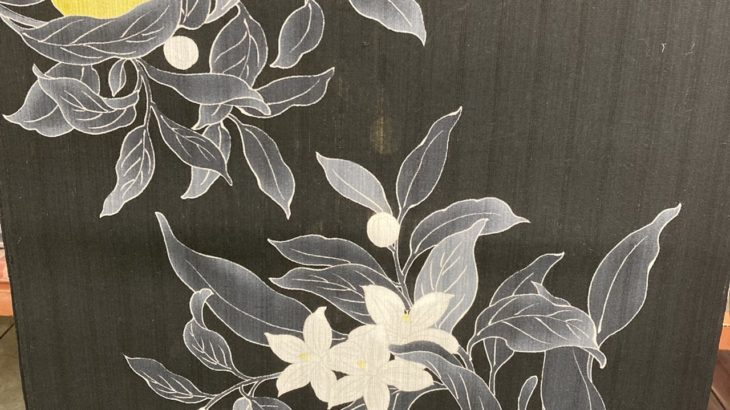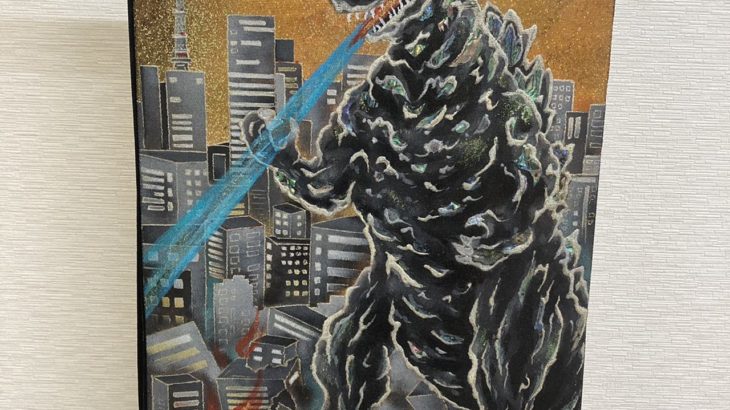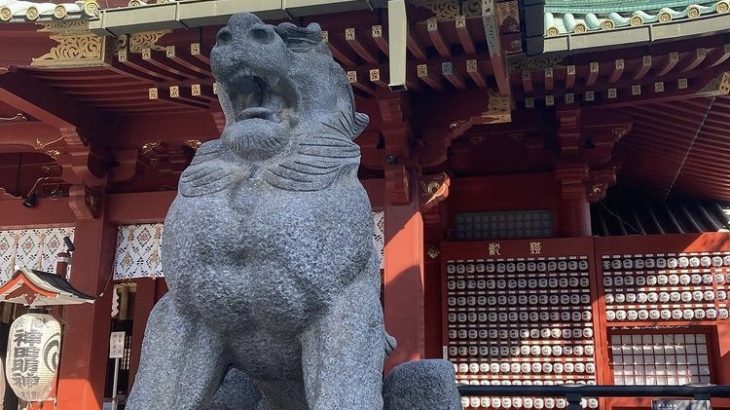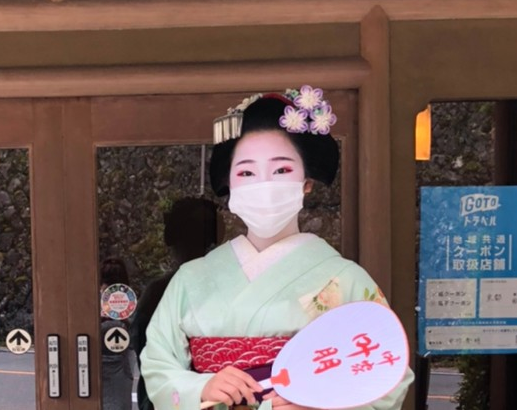Happy new year. I’m Shinji aka Warashibe Choyja (Straw Millionaire).
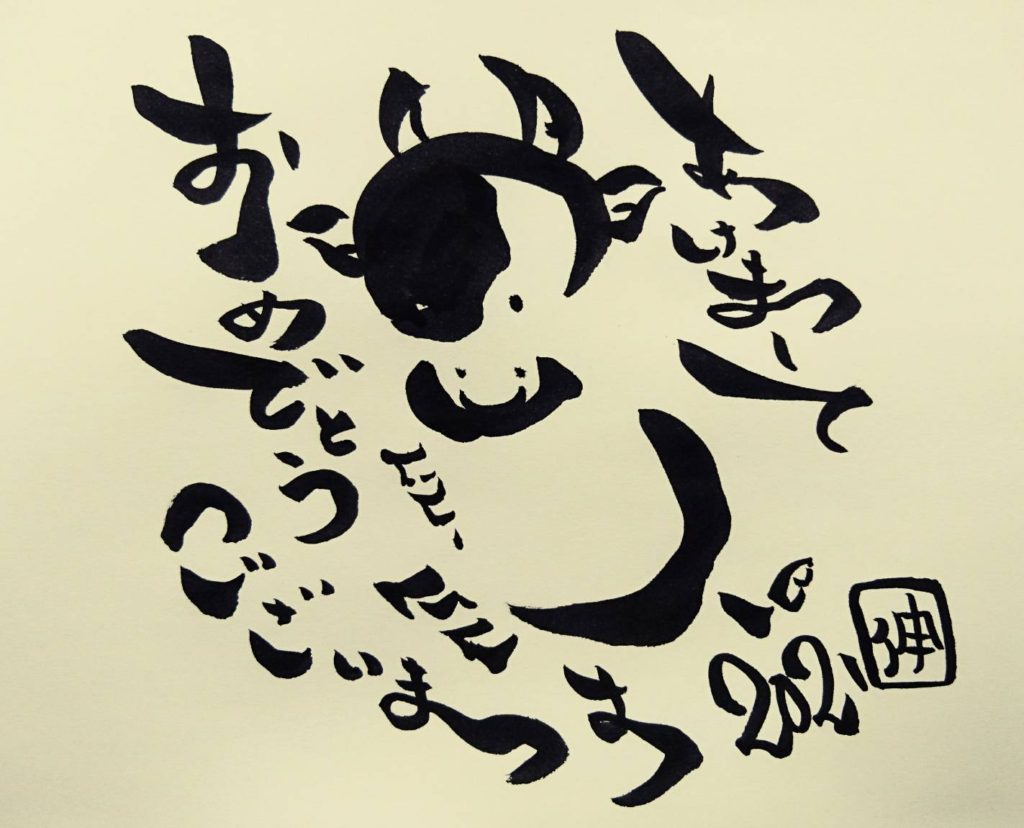
I would like to talk about patterns that are often used in kimono. Various patterns are used for kimono. Each of the patterns has a meaning, but the number of Japanese people who know the meaning of the pattern is decreasing. Some people involved in kimono and culture know about some patterns. Recently in Japan, an anime called “Kimetsu no Yaiba” has become popular, and there are various patterns in that anime, so this time I will talk about that.
Kamon (family crest)
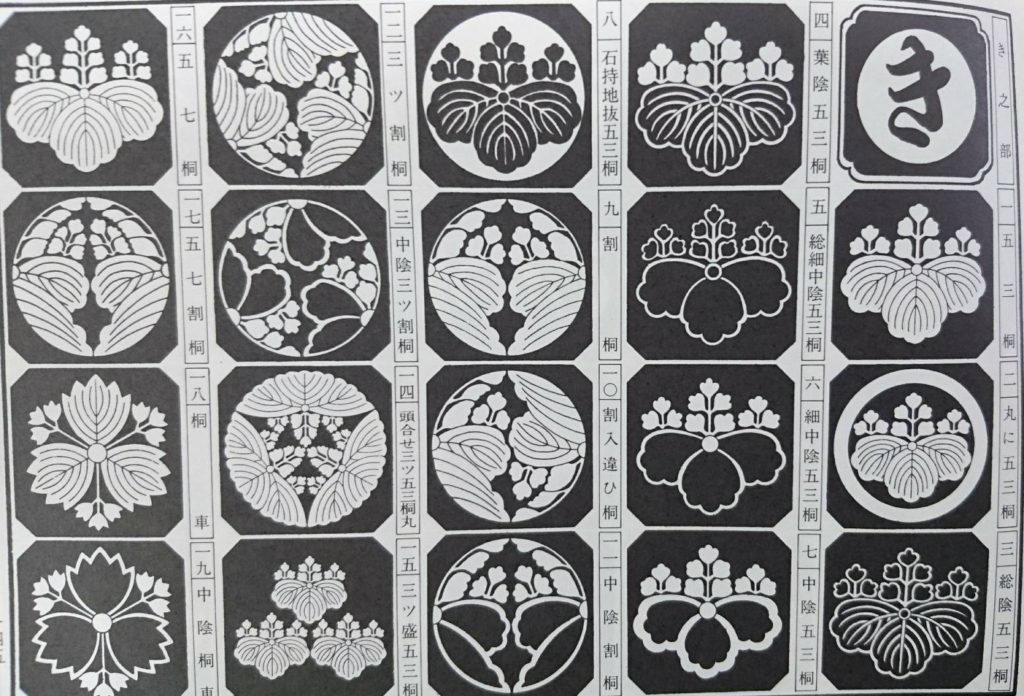
Many family crests in modern Japan have become “Gosan no KIri”, “Agehacho(swallowtail butterfly)”, “Tsuta(ivy)”, etc., and are still written on prestigious kimonos. Its origin is said to be the latter half of the Heian period (794-1192), and it is said to be a pattern used by aristocrats, and the meaning gradually changed during the Kamakura period (1192-1333). In the second half, most samurai families began to carry the “Kamon” as a sign of their own home. During the Nanbokucho period (around 1336 to 1392), it was popular among samurai to put a Kamon on their clothes, and after that, clothes with a coat of arms came to be called formal wear, and the culture of putting a Kamon on formal wear. Was born. It is said that in the Warring States period (around 1467 to 1590), more Kamon were born to distinguish between enemies and allies. In the Edo period (around 1603-1868), there were no conflicts, and the Kamon as a symbol of authority was used, and it was changed to be used as an indication of the style of the house. It is said that many Japanese people use “Gosan no kiri” at this time, when the common people who did not have a Kamon used the Kamon that Toyotomi Hideyoshi used when he was a vassal of Oda Nobunaga. Originally, the paulownia family crest is said to be a crest that could only be used by the imperial family around 800 AD, and the phoenix, which is said to “end the conflict when its appearance appears and become the world of Taihei Tenka” stops. It is said to be a tree. In this way, one paulownia tree, which is a family crest, also has a story. The Agehacho is said to change beautifully, and is often used as a female crest. Tsuta is said to parry, take root and protect the house from disasters even when the wind blows.
Hanamon(Flower crest)

Some people use embroidery instead of Kamon to put their favorite flowers and bats (= meaning that the future is bright because they can be seen at night) in kimono.
Meaning of kimono pattern
Here, I would like to introduce some of the meanings of patterns used in Japanese culture, such as kimono and hanging scrolls.
1. Asa no ha (Hemp leaf)
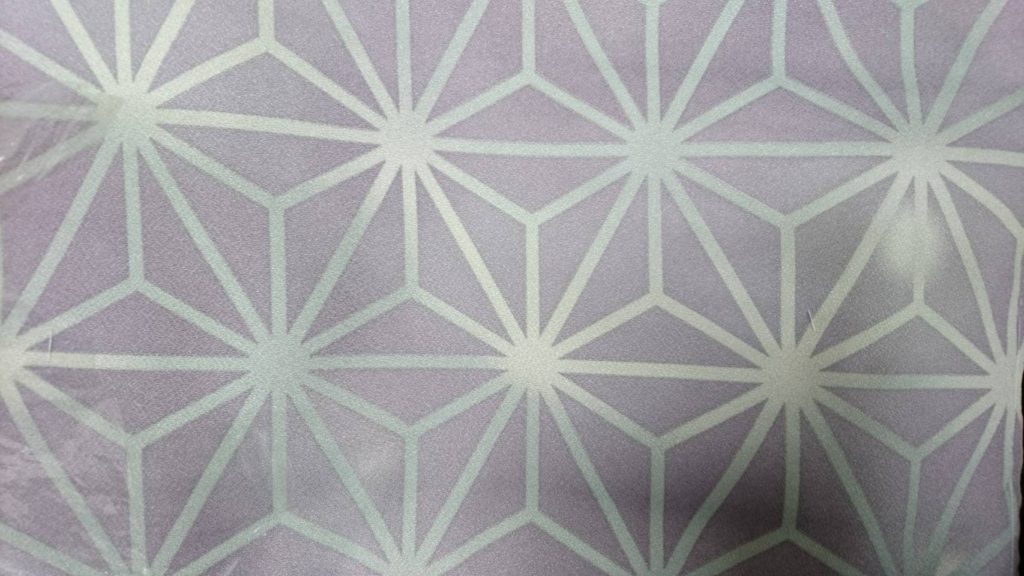
It is a hexagonal geometric pattern that was also used for decoration in the Heian period, and later it resembles a hemp leaf, so it becomes a pattern that is familiar as a hemp leaf pattern. The hemp leaf grows as fast as 4 meters in 4 months, and the wish for the healthy growth of the child is included. Hemp also has the meaning of amulet, and hemp fiber is also used in shrines such as Shimenawa. As an aside, the “tsuna”, which has many fans overseas and is allowed to tie only the yokozuna to the waist in sumo wrestling, is also made of white hemp. It is said that the Kabuki actor in the Edo period played the hemp pattern, and it became a big fashion when he wore a costume with a hemp leaf pattern.
2. Yukiwa (Snow ring)
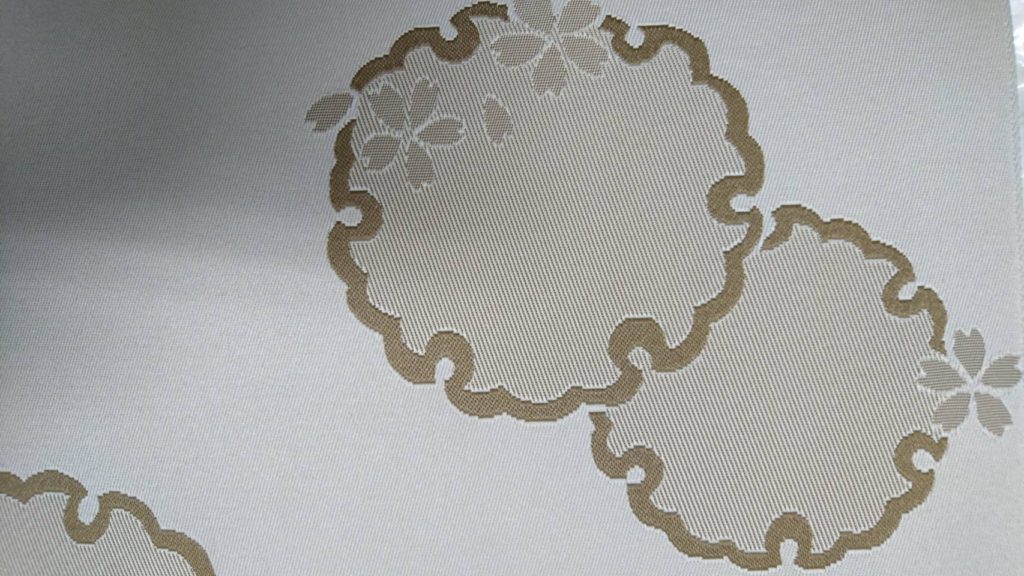
The snow ring pattern is also a pattern that has been used since the Heian period, and snow is called the five-grain spirit and is one of the auspicious patterns that wishes for a good harvest that year. The predominant theory is that this pattern also got its name later, but it is a pattern that many people like in Japan as well. There are several factors. Some people say that it is a Japanese sensibility that likes the fragility that it melts immediately after it snows, but personally, I asked a kimono writer teacher, “It’s not a perfect circle, I’m not a perfect person. .. There are still immature places, so I will devote myself every day. I like the story. In the world of tea, people of the school called Edo Senke sometimes put this snow ring as a crest in their kimono instead of the Kamon.
3. Uroko (Scale)
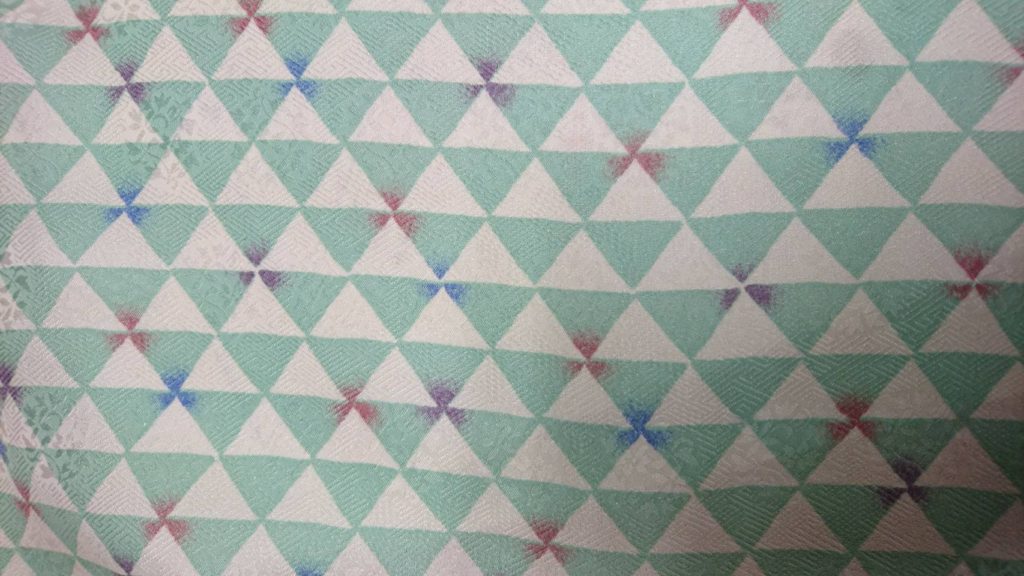
A pattern in which isosceles triangles and equilateral triangles are lined up is called Uroko. It is believed that this name was given to the scales of fish and snakes. The origin is not known exactly, but it is a pattern drawn on the haniwa of the Kofun period (around 300 to 700). The triangle has long been used as a pattern representing demons and illnesses, and as a talisman pattern to drive away those who dislike it by drawing the mark of the devil who succumbed to God. This scale pattern is also used in the costumes of demons and snakes in Noh and Kabuki, and Kabuki’s performance “Kyokanoko Musume Dojoji” is famous. Also, in some areas such as Kyoto, Japan, it is still customary for a 33-year-old woman to wear a long undergarment with a scale pattern on her kimono underwear.
4. Nami (Wave)
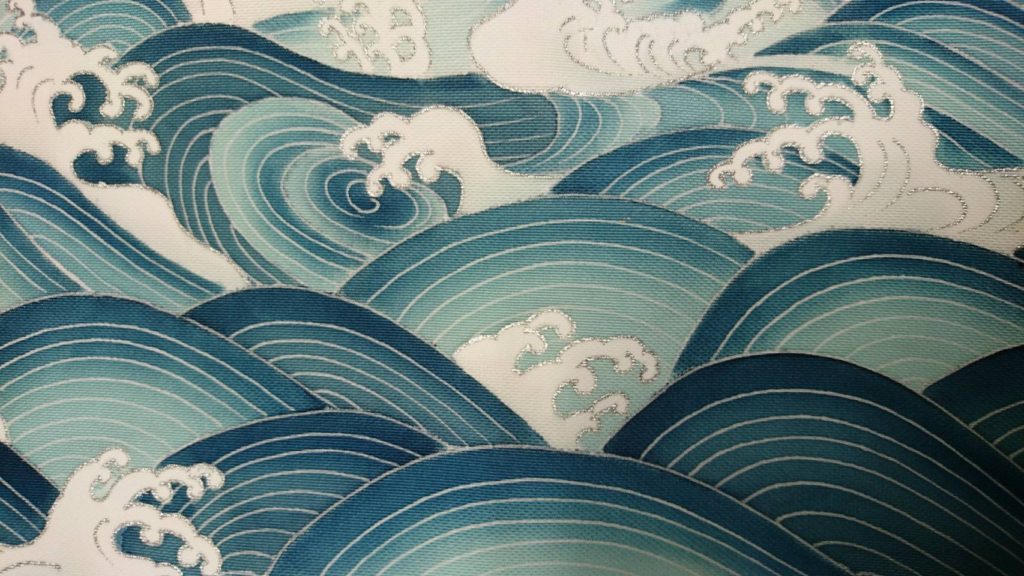
Wave patterns are often used for kimonos, especially men’s kimonos. This is also meaningful, and if it is pushed many times, it will change the shape and terrain of the rock, so it is used as a pattern to wish for the indomitable spirit of having a strong will and not giving up on anything. It is a pattern that is often used. In addition, there is also a wave pattern called “Seikaiha (Qinghai wave)” that represents a geometrically calm wave, and it is preferred as a pattern that wishes for a long and peaceful and safe life because the calm ocean continues endlessly. Also, in kimono, there is a pattern that expresses the flow of water called “running water”, and the water has no shape, and as soon as any shape of the dispute fits neatly, the Japanese word “flowing water” It is said that it comes from.
5. Hanaikada (Flower basket)
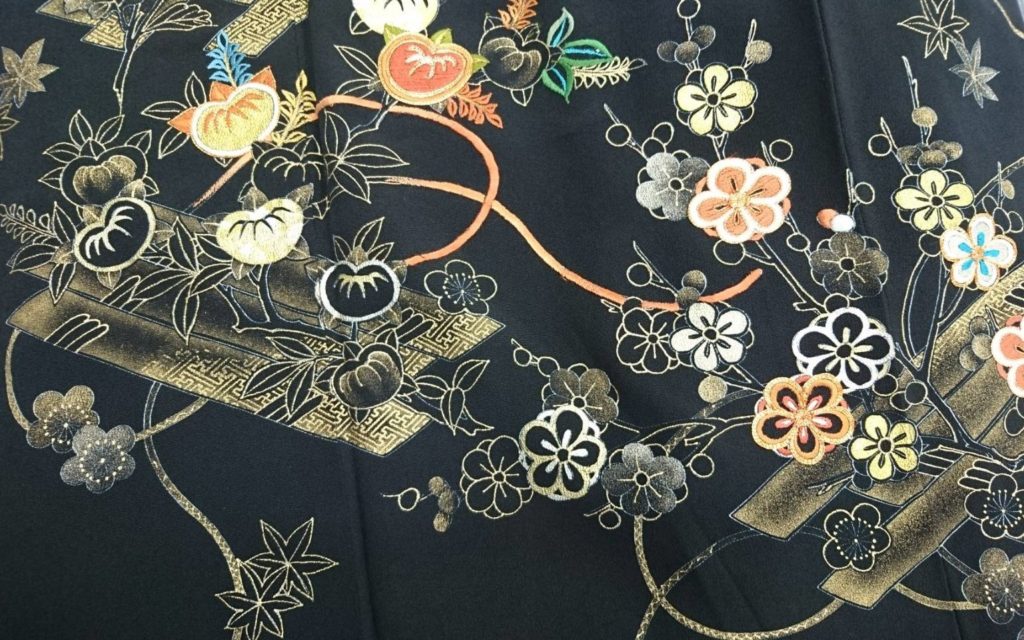
Hanaikada is a group of cherry blossoms that flow into the river like a raft. Eventually, not only cherry blossoms but also designs with flowers such as autumn grass, chrysanthemums, and autumn leaves on the raft came to be called “Hanaikada”. It is a classic and fashionable pattern that was popular from the Momoyama period to the Edo period. In this way, many patterns depicting the patterns and landscapes of the flowers of the four seasons remain. As you can see, the flower raft of the pattern is literally studded with flowers and branches on the raft. This describes the raft floating in the flow of the river as “human life.” It is said that it also depicts life flowing like a river without stopping at one point.
6. Same (Shark)
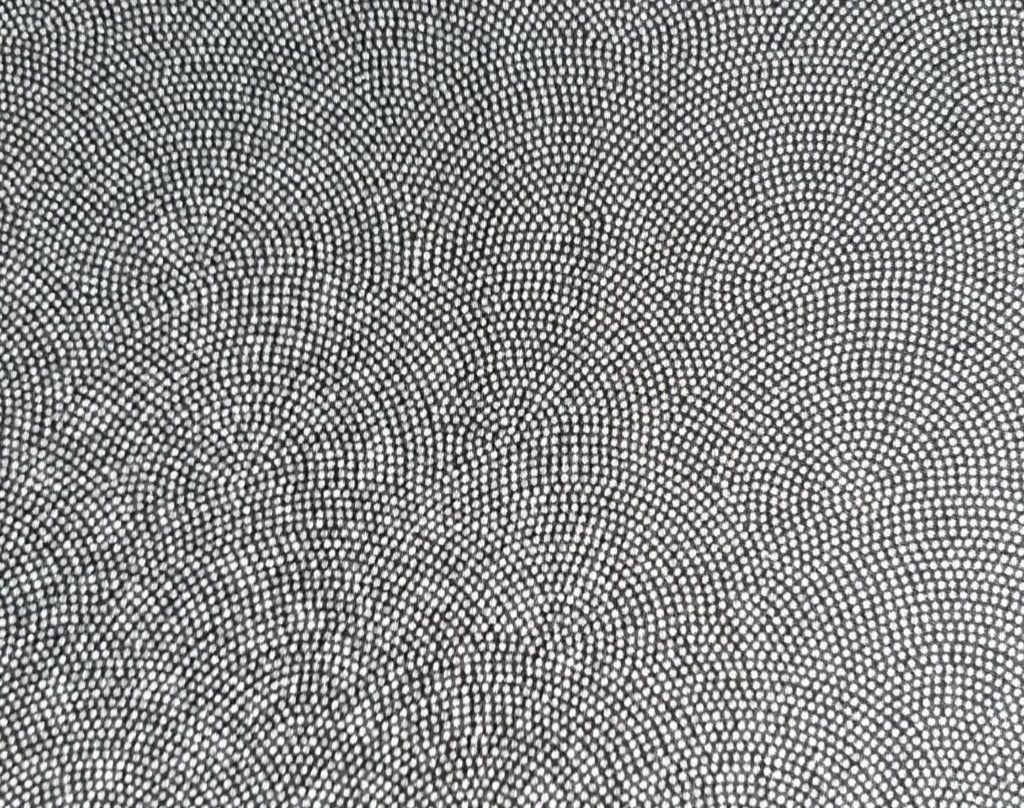
This is a typical pattern used for Edo Komon, but this is one of the patterns that represent the family pattern of the Edo period mentioned earlier. It will be the rule of the Kishu Tokugawa clan. The Kishu Tokugawa clan was the clan that governed the production area of “Ise katagami,” which is a pattern for dyeing Edo Komon. It is said that sharks were so valuable that there was a time when it was the status of a high-class samurai to wrap “shark skin” around the handle of the samurai swords at that time. Among the shark patterns, the ones with particularly fine eyes are called “Gokusame”.
7. Mansuji (Ten thousand muscles)
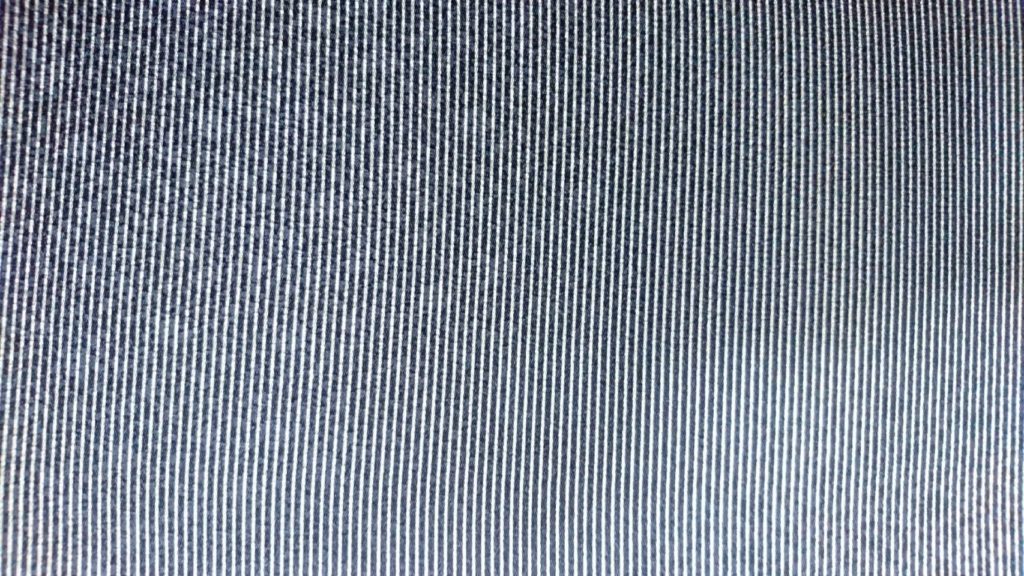
Mansuji became a popular pattern in the Edo period, and the stripes until the early Edo period were large, as the word “Old weaves were only horizontal lines and many thick lines” was written in Edo customs. It seems that there were many horizontal stripes. This technique is very difficult, and the technique of the human hand that dyes a piece of cloth, which is about 12 meters long, is designated as an important intangible cultural property in Japan. It expresses the idea of “straightening the idea.”
8. Ichimatsu (Checkered)
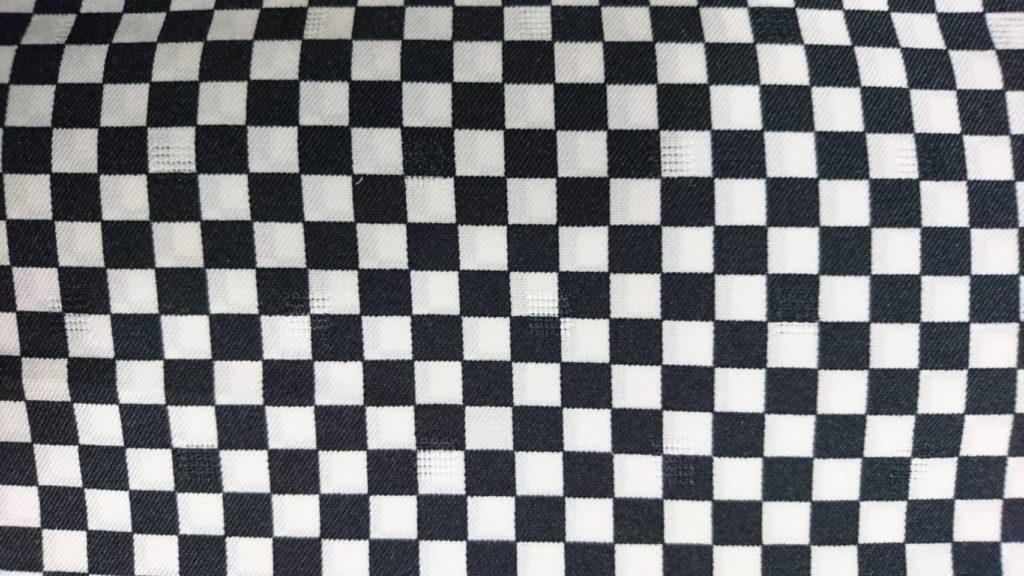
The Ichimatsu is a checkered pattern in which squares are lined up so that there is no break in the vertical and horizontal directions, like a grid pattern. This pattern is derived from the Kabuki actor “Sanogawa Ichimatsu” in the Edo period. At that time, it became popular because Sanogawa Ichimatsu wore a hakama with a white and navy checkered pattern that he wore in stage costumes. The uninterrupted square pattern has the meaning of prosperity of offspring and business expansion. Therefore, it is a pattern that has long been preferred as a lucky charm such as a gift.
9. Takarabune (Treasure ship)
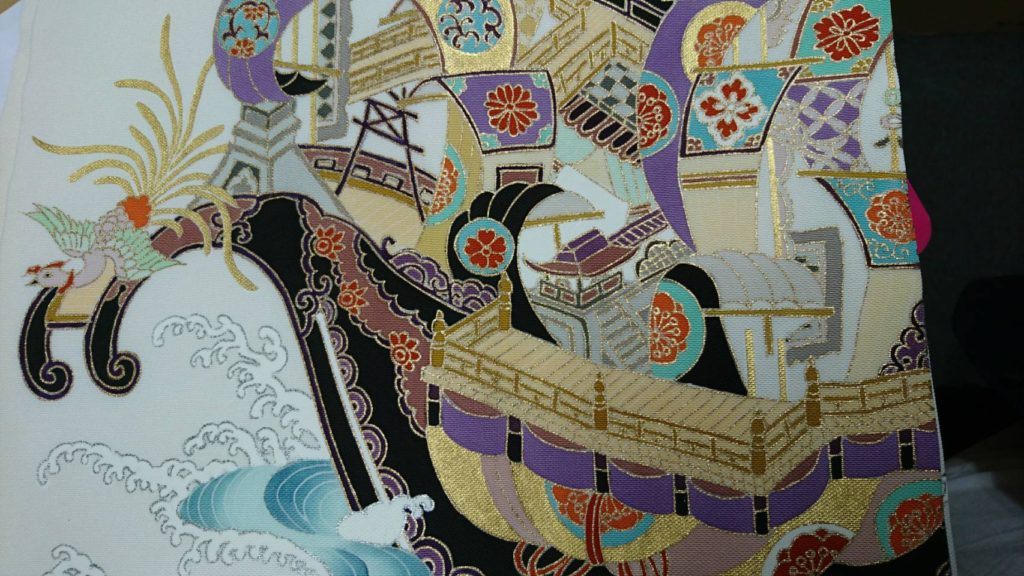
A treasure ship is a sailing ship loaded with treasures such as the Seven Lucky Gods (Daikokuten, Bishamonten, Ebisu Ten, Jurojin, Fukurokuju, Benzaiten, Budai Takeshi), and a treasure called Shippou (explained later) rides in it. Therefore, it is regarded as a congratulatory ship and is familiar with lucky charms.
10. Shippou (Seven treasures)
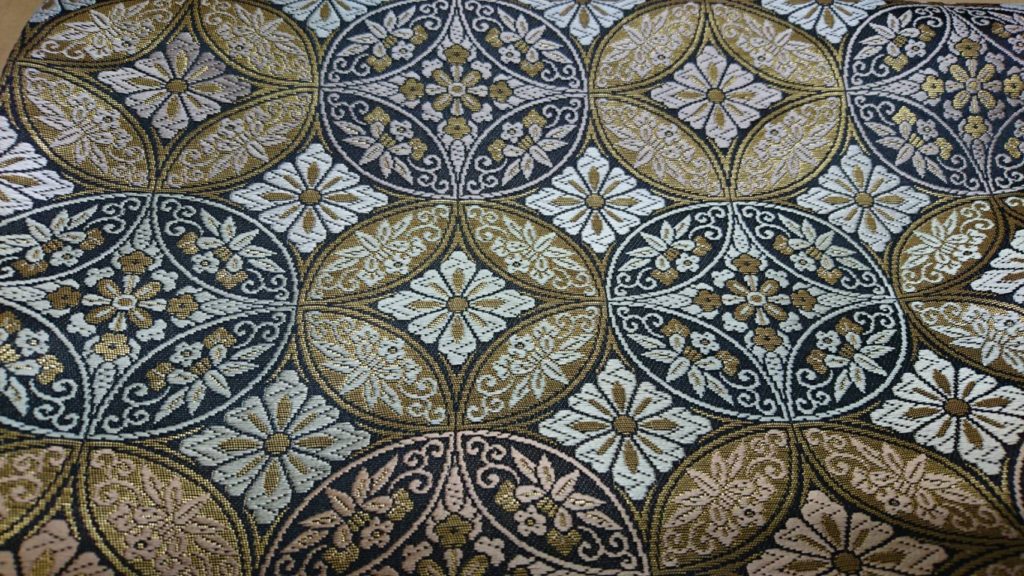
Shippou is originally a Buddhist term for “Kin (gold), Gin (silver), Hari (crystal), Ruri (lapis lazuli), Menou, Sango (red coral), Syako (white coral and mantis shrimp)”. It represents the seven treasures. The Shippou is a pattern made by stacking four circles on one circle, and the pattern that continues forever is called the Shippou pattern, and it is called the pattern that expresses the prosperity of descendants, the relationships of people, and the harmoniousness of relationships. There are various theories as to why it is called a cloisonne, but I want to change from the pronunciation “Shihou (four directions)” that represents four directions to the lucky charm “Shippou (seven treasures)” and value the connection of people as well as the treasure. It is said that it may be from the thought.
This time, I talked about the meaning of various patterns. This Straw Millionaire is also made up of people’s connections, so I would like to thank people for their relationships, just like the Shippou. Also, if there are any patterns that interest you, I would like to post them again next time if I have the opportunity.
